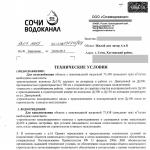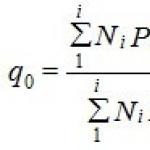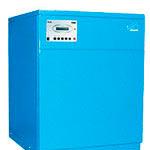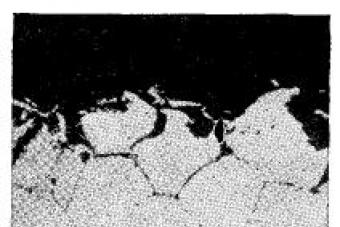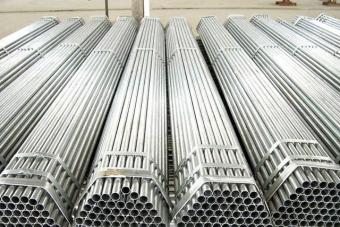Steel characteristic 12x18n10t
Density | 7630 kg / m3 |
Appointment | parts operating up to 600 ° C. Welding machines and vessels working in dilute solutions of nitric, acetic, phosphoric acids, solutions of alkalis and salts and other parts working under pressure at temperatures from –196 to +600 ° C, and in the presence of aggressive media up to +350 ° C .; austenitic steel |
Elastic modulus | |
Shear modulus | |
Weldability | Welded without limits |
Forging temperature | Start 1200, end 850. Cross sections up to 350 mm are cooled in air. |
Chemical composition | Silicon: 0.8, Manganese: 2.0, Copper: 0.30, Nickel: 9.0-11.0, Sulfur: 0.020, Carbon: 0.12, Phosphorus: 0.035, Chromium: 17.0-19.0, Titanium: 0.6-0.8, |
A2, A4 - Characteristics of fasteners made of stainless steel
A2, A4 stainless steels: structure, mechanical properties, chemical composition. Fasteners from steel A2, A4 ( stainless bolts, screws, nuts, washers, studs, etc.): mechanical properties, values \u200b\u200bof tightening torques and pre-tightening forces.
Austenitic steels contain 15-26% chromium and 5-25% nickel, which increase corrosion resistance and are practically non-magnetic.
It is austenitic chromium-nickel steels that exhibit a particularly good combination of machinability, mechanical properties and corrosion resistance. This group of steels is most widely used in industry and in the manufacture of fastener elements.
The steels of the austenitic group are indicated by the initial letter “A” with an additional number that indicates the chemical composition and applicability within this group:
Austenitic structure
Steel band | Material Number | Brief designation | AISI number |
X 5 CrNi 18-10 / X 4 CrNi 18-12 | AISI 304 / AISI 305 |
||
X 6 CrNiTi 18-10 | |||
X 5 CrNiMo 18-10 / X 2 CrNiMo 18-10 | AISI 316 / AISI 316 L |
||
X 6 CrNiMoTi 17-12-2 |
Steel A2 (AISI 304 \u003d 1.4301 \u003d 08X18H10) - non-toxic, non-magnetic, non-hardening, corrosion-resistant steel. Easy to weld and does not become brittle. May exhibit magnetic properties as a result of machining (washers and some types of screws). This is the most common group. stainless steels. The closest analogues are 08X18H10 GOST 5632, AISI 304 and AISI 304L (with reduced carbon content).
Fasteners and products from A2 steel are suitable for use in general construction works (for example, when installing ventilated facades, stained glass structures from aluminum), in the manufacture of fencing, pumping equipment, and instrument making from stainless steel. steel for oil and gas, food, chemical industry, shipbuilding. It retains strength properties when heated to 425 ° C, and at low temperatures to -200 ° C.
A4 steel (AISI 316 \u003d 1.4401 \u003d 10X17H13M2) - differs from A2 steel by the addition of 2-3% molybdenum. This greatly increases its ability to resist corrosion and acid. A4 steel has higher anti-magnetic characteristics and is absolutely non-magnetic. The closest analogues are 10X17H13M12 GOST 5632, AISI 316 and AISI 316L (low carbon content).
Fasteners and rigging made of A4 steel are recommended for use in shipbuilding. Fasteners and A4 steel products are suitable for use in acids and environments containing chlorine (for example, in pools and salt water). It can be used at temperatures from -60 to 450 ° C.
Strength classes
All austenitic steels (from “A1” to “A5”) are divided into three strength classes, regardless of grade. The lowest strength is observed in annealed steel (strength class 50).
Since austenitic steels are not hardened, they have the highest strength in the cold-deformed state (strength classes 70 and 80). The most widely used fasteners are made of A2-70 and A4-80 steels.
The main mechanical properties of austenitic steels:
ASTM Type (AISI) | |||||
Specific Gravity (g / cm) | |||||
Mechanical properties at room temperature (20 ° C) |
|||||
Brinell hardness - HB | In annealed condition | ||||
Rockwell Hardness - HRB / HRC | |||||
Tensile Strength, N / mm 2 | |||||
Tensile Strength, N / mm2 | |||||
Relative extension | |||||
Impact strength | KCUL (J / cm 2) | ||||
KVL (J / cm 2) | |||||
Mechanical properties when heated |
|||||
Tensile Strength, N / mm2 | |||||
The main mechanical properties of bolts from steels A2, A4 various strength classes:
The chemical composition of stainless steel:
Steel grade | Group | Chemical composition (wt.%) 1) Extract from DIN EN ISO 3506 |
|||||||||
Note |
|||||||||||
Austenitic | 0,15 | 1,75 | |||||||||
16 | 10,5 | ||||||||||
16 | 10,5 | ||||||||||
1) Maximum values, unless otherwise specified.
2) Sulfur can be replaced by selenium.
3) If the mass fraction of nickel is lower than 8%, then the mass fraction of manganese should be at least 5%.
4) There is no minimum limit for the mass fraction of copper if the mass fraction of nickel is more than 8%.
5) Molybdenum is allowed at the discretion of the manufacturer. If limitation of molybdenum content is necessary for certain applications, this should be specified by the client.
6) Molybdenum is also allowed at the discretion of the manufacturer.
7) If the mass fraction of chromium is below 17%, then the mass fraction of nickel should be at least 12%.
8) In austenitic steel with a mass fraction of carbon of a maximum of 0.03%, nitrogen should be a maximum of 0.22%
9) For stabilization, titanium ≤ 5xC must be contained up to a maximum of 0.8% and be designated in accordance with this table or niobium and / or tantalum ≤ 10xC up to a maximum of 1% and shall be designated in accordance with this table.
Austenitic chromium-nickel steels exhibit a particularly good combination of machinability, mechanical properties and corrosion resistance. Therefore, they are recommended for many applications and are the largest group of stainless steels. The most important property of this group of steels is its high corrosion resistance, which increases with increasing content of alloying, especially chromium and molybdenum.
Stainless steel is the most widely used material from which equipment is made for the production, storage and transportation of food products. This is due to the high requirements to which it must meet in terms of hygiene, toxicity, etc.
The technological environment of the wine industry is very aggressive towards carbon steels. The aggressiveness of various varieties of wines is determined by the content of sugars, organic acids, sulfur dioxide and alcohol in them. These indicators vary significantly depending on the type of wine. So, table (dry) wines do not contain Sugars, but only 9 -14% vol. alcohol, fortified wines contain 8 - 10% vol. Sugars and 16 - 20% vol. alcohol, sweet dessert wines-8-20% vol. Sugars and more than 13% vol. alcohol, table semi-sweet wines - 3 - 7% vol. Sugars and 7 - 12% vol. alcohol. The mass concentration of titratable acids is in the range required by GOST (3-8 g / dm3). When wort is clarified, sulfur dioxide is traditionally used. Permissible concentration (MPC) of sulphurous anhydride in wines, as a rule, is not more than 150 - 400 mg / l.
In the alcohol and distillery industries, process media are corrosive. They may contain unfermented sugar, organic acids, esters, fusel oils, aldehydes, and others. These include mash (cereal, molasses, cane), rectified spirit, raw alcohol, distillery, as well as vodka, various liquors , tinctures and low alcohol drinks.
CHARACTERISTICS OF ALLOYS AND THEIR APPLICATION
The characteristics of various stainless steel alloys are given in table. 1 and 2.
Some Russian suppliers persistently convince consumers that pipe products from AISI 430 (12X17) steel can also be used in pipelines for the food industry. This is not true, since clause 4 of DIN 11850 (“Materials”) unambiguously indicates that in the food industry only the following steels are allowed as a standard: AISI 304 (1.4301), AISI 304L (1.4307), AISI 316L (1.4404).
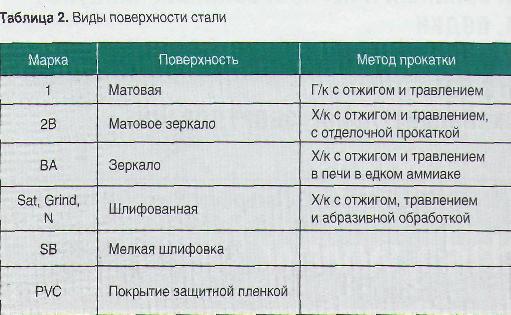
This group of stainless steels is used most widely and includes grades 304 and 316. These materials are ideal for use in food processing, milk, in the winemaking and distillery industries, in brewing, in the pharmaceutical, chemical and petrochemical industries. Grade 304 stainless steels contain about 18% chromium and 10% nickel and exhibit excellent corrosion resistance. There, a particularly high resistance to corrosion is required under extreme conditions, especially where chlorides are present, grades 316 are used, containing about 17% chromium, 12% nickel and 2.2% molybdenum. Steel 12X18H10T is acid resistant, not susceptible to intercrystalline corrosion, heat resistant to 600 ° C. It is used to make milk processing equipment, cans, flasks, fermentation tanks, barrels, tank equipment for wineries and distilleries, as well as cooking utensils and equipment for kitchens and canneries.
Unlike other grades of stainless steels, austenitic grades are non-magnetic, and, as a result, magnetic particles do not stick to the walls of the system, which could otherwise cause clogging.
Ferritic stainless steels (much softer than martensitic, due to the low carbon content; also have magnetic properties, denoted by the initial letter F).
Ferritic stainless steels have lower corrosion resistance compared to austenitic grades 304 and 316 and are used where the requirements are not so high. Ferritic steels contain 11.5-16.5% chromium and less than 0.5% nickel. The steels of this group are magnetic and will cause the adhesion of magnetic particles, which can lead to problems associated with contamination. Ferritic steels are unsuitable for the manufacture of drainage products.
Martensitic stainless steels(much harder than austenitic steels, and can be magnetic; more susceptible to corrosion, indicated by the initial letter C).
Martensitic steels are magnetic and are characterized by the greatest strength in the group of stainless steels, at the same time they have the least resistance to corrosion. They can undergo thermal hardening and are mainly used for the manufacture of knife tools.
Types of steels of the most common - austenitic - group are indicated by an additional number, which indicates the chemical composition and applicability within this group:
. A1- are used, as a rule, in mechanical and mobile units. Due to the high sulfur content, this type of steel is less than other types capable of resisting corrosion;
. A2 - non-toxic, non-magnetic, non-hardenable, corrosion-resistant steel. Easy to weld and non-fragile. They may exhibit magnetic properties as a result of machining (washers and some types of screws). This is the most common group of stainless steels. Fasteners and products from A2 steels are not suitable for use in acids and environments containing chlorine (for example, in pools and salt water). They are suitable for temperatures up to -200 ° C. The closest analogues are AISI 304 and AISI 304L with even lower carbon content;
. A3- similar in properties to A2 steels and additionally stabilized by titanium, niobium or tantalum. This increases their resistance to corrosion at high temperatures;
. A4- similar to A2 steel, but with the addition of 2 - 3% molybdenum. This makes them significantly more able to resist corrosion and acid exposure. A4 fasteners and rigging products are recommended for use in shipbuilding. Suitable for temperatures up to -60 ° C. The closest analogues are AISI 316 and AISI 316L with low carbon content;
. A5- has the properties of A4 steels and is additionally stabilized with titanium, niobium or tantalum, like A3, but with a different content of alloying additives. It also increases its resistance to high temperatures.

The choice of stainless steel grade for each application is a very important factor. It must be remembered that even stainless steels of grades 316 do not have protection against all types of chemical attack, for example, from use with reducing solutions, such as hydrochloric and oxalic acids, especially in a concentrated and (or) heated state.
“Distillery production and winemaking” No. 10 (106), October 2008
A. S. Boguslavsky
Stainless steel at the dawn of its history, corrosion-resistant properties gave rise to many myths among people, and its products were considered miraculous, as they were timeless. What this alloy represents today, we will discuss in the article.
1
Today, stainless steels are a rather large set of alloys with various properties that are described by numerous GOSTs and TUs. But they share one common property - resistance to moisture and oxygen, the main enemies of iron-containing materials. To achieve this "survivability" allows a special chemical composition. All types of this alloy contain more than 10% chromium in their composition, which easily starts the passivation process on the surface of the steel.
Stainless steel pipes
The inactivity of the stainless steel surface is explained by the thinnest layer of the oxide film that chromium forms under the influence of oxygen. This protects the product from any other interaction, including water - the main activator. Moreover, the charm of such a composition is that even if the integrity of the surface is violated, such a layer very quickly reappears. For example, if a chip or deep scratch is formed, then chromium, evenly present in the entire volume of steel, will again react with oxygen and create a protective film. This kind of healing effect.
But stainless steels also have a weak spot due to their unusual properties. In oxygen-free environments or environments with a low content of this oxidizing agent, a layer of chromium oxide will form slowly and unevenly, which will necessarily be reflected by the appearance of foci of corrosion. Also, a simple violation of production technology can become the cause of material damage. Then corrosion is called crevice. It is also of an electrochemical nature, therefore, it is also not necessary to discount the danger of interaction with other metals and salt medium (for example, sea water).
Despite the enviable properties, stainless steels can change their quality depending on the alloying elements. For example, sulfur can be used to strengthen the alloy, but to the detriment of anticorrosive abilities, and nickel will increase immunity to acidic media. The same properties are given to steel by additives from Mn (manganese), Mo (molybdenum), Cu (copper) and other metals of this family. More exotic metals like Ti (titanium), Nb (niobium) or Ta (tantalum) will make the alloy more heat resistant.
2
By structure, chromium stainless steels are divided into 5 types, 3 - ferritic (F), martensitic (C) and austenitic (A) are of interest to the general user. The first variety contains little carbon, so it is softer and may have magnetic properties. The second hardest, less resistant to corrosion, can also act as a magnetic material. Application is suitable for tableware, cutting tools and in some areas of mechanical engineering. Austenintic is considered the most popular. It is a non-magnetic alloy with a high content of chromium (almost 20%) and nickel (up to 15%), resistant to corrosion. Such stainless steel can be processed and is used in a large number of industrial tasks and for the manufacture of fasteners.

Stainless steel alloys
According to domestic GOST, ferritic stainless steel is often designated 12X17, it is a heat-resistant variety, but poorly welded. Therefore, it is mainly rolled products, pipes or rods that are made from it, and a sheet form of release is also found. For each product, you can find the corresponding GOST with quality requirements. To access all the characteristics of stainless steels, you can use GOST 5632–72. All types of alloy with a brief description of the application, chemical composition and physical properties can be found in this document alone. It is better to look at more detailed data and special instructions in separate GOST, which almost every brand of stainless steel has. Martensitic types of anticorrosive steel are recognized leaders in strength due to the most stable structure. They also have a peculiar metal memory from a technological point of view. Quite often, such steel is labeled as heat-resistant.
As can be seen from GOST 5632–72, it is presented most widely, this is a very diverse list of alloys both in composition and properties, but they are all heat-resistant and very resistant to corrosion. These are the so-called stainless steel 300 series. Such steel is universal, therefore it is so popular in the market. We will discuss its types in a separate paragraph.
3
Steel A1 is characterized by a high sulfur content, this leaves a certain imprint on its resistance to corrosion, although it is very heat-resistant, sometimes the threshold reaches 1000–1100 ° C. True, it is important to monitor the acidity of the medium, the atmosphere should be reducing, and the sulfur there should not be more than 2 g / 2 m. Elements of such steel are used in the manufacture of alkalis or hydrogenation, of course, all installations for thermal operations are made of them (furnaces, branch pipes of motors and turbines, cracking units, reforming machines). Doors, pins and brackets for furnaces are also made of such an alloy.

A4 steel items
A2 steel is easily welded, without losing strength. Like all types discussed, it resists corrosion well, does not contain toxins, and does not exhibit magnetic properties. Although the last statement can be corrected if properly processed product. This is how magnetized washers and screws get. This is a fairly common steel grade, but it is not acid resistant, so it will not work to use fasteners from this alloy in a pool where there is a lot of chlorine or salt water. According to GOST 5632–72, A2 steel products do not lose strength at low temperatures up to -200 ° C.
Within this type, there are several analogues with different but substantially low carbon contents. These steels are resistant to intercrystalline corrosion (hidden from the human eye and detected already in the later stages), which is why they are leading in those industries where this property is important. Mostly products from A2 you will find in installations for light, chemical, and in the pharmaceutical and plastics industries. Also, GOST 5632–72 allows the equipment of catering units with steel materials, for example, kitchens, restaurants, bars.
Steel A3 is very similar in characteristics to A2, but has useful alloying additives (Ti, Nb, Ta), because of this it is more heat resistant than the previous variety. Even at high temperatures, the product is able to not lose quality and not be covered by corroding corrosion. Such alloy withstands decent quality up to 800 ° C. Therefore, it is often used for chemical equipment, in boiler bodies, as compensation compounds.
A4 steel is the most acid resistant. Its composition is slightly different from A2, mainly due to the presence of molybdenum in a small amount (about 2-3%). But even this small amount makes it less susceptible to intergranular corrosion, even in aggressive environments. Products from A4 can maintain their properties at a decent level - up to -60 ° C in the negative range and up to 450 ° C in the positive. Under this marking, there are also various combinations of steels in chemical composition, more detailed proportions that such an acid-resistant grade may have can be found in GOST 5632–72. Alloy A4 is the main contender for use in the food and chemical industries. A tool is made from it, which will have contact with sea water. You can also find quite often all kinds of hardware from A4 steel. The reason for their popularity is versatility, they are not afraid of either water or acids and are quite durable.
Under the A5 brand, a certain averaged version is assembled between A4 and A3, so the properties obtained are the same in demand. This steel is heat resistant and can withstand aggressive chemical environments, that is, it can also act as acid resistant.
Special chemical processes inside the crystal lattice create a strong immunity to intergranular corrosion. The scope of products from such steel is similar to the description of A4. Marking is expressed according to the DIN standard, but almost every country with a large steel industry has its own standard, summary tables can be found on the open spaces of the network. Also, in each type of stainless alloy there is a more fractional separation - the steels are marked based on the composition and proportions of the elements included in it. This is clearly seen in GOST 5632–72, which lists a huge number of brands and their analogues.
4
Since the set of stainless alloys is huge, and it’s rather difficult to navigate them, you need to know some special markings. For example, high-strength 16X16H3MAD is most often used in the aviation industry. It is capable of not suffering from corrosion and can do this under harsh environmental conditions and element loads. Such a high-strength brand is also used for cables for bridges and building structures. In view of the responsibility assigned to products made of this material, all metal rolling has a lot of requirements set forth in numerous OST, GOST and TU.

Steel 16X16H3MAD
An acid-resistant variety of steel is also a very important component of industrial and not only plants, and mistakes in its choice can also be very expensive. And the danger here is that chemicals are able to destroy the alloy discreetly, at the level of the crystal lattice, and will open to the human eye even when an accident occurs. The most typical representative of such steels is 10X17H13M2T. This acid-resistant brand has several close analogues - 15X25T, 08X22N6M2T.
A2 and A4 stainless steels. Practical application and structural features. A2 steel and A4 steel is the shortened name for Austenitic stainless steel grades. Austenitic steel has a number of remarkable properties, which provided it with a very wide application in the national economy. Steel A2 and A4 are non-toxic and corrosion resistant. They are well subjected to mechanical and heat treatment, as well as welding. Fasteners made of A2 steel and A4 steel are practically non-magnetic, strong and durable. They perfectly retain their properties at high and low temperatures.
A2 steel has a domestic analogue - 08X18H10 stainless steel and a foreign analog - AISI 304 stainless steel (in the USA). Assembly units, parts and fasteners from A2 steel are used in the oil, food, chemical and gas industries; in instrument making and shipbuilding; in construction during the installation of ventilated facades and stained glass structures, as well as in the manufacture of pumping equipment. Products made from A2 steel retain their strength properties in a wide temperature range: from low (-200 degrees Celsius) to high (+425 degrees Celsius).
Steel A4 is similar in its characteristics to steel A2, but its scope has expanded significantly due to the addition of 2-3% molybdenum, which contributes to its higher resistance to corrosion in environments containing acids, salts and chlorine. Products made of stainless steel A4 retain their strength properties at low (up to -60 degrees Celsius) and at high (up to +450 degrees Celsius) temperatures. These products are used: in the chemical industry, where they are exposed to aggressive environments; in shipbuilding (fasteners and rigging products) to protect against the damaging effects of sea water; in pools containing chlorinated water. A4 steel, like A2 steel, also has a domestic analogue - steel type 10X17H13M2 and a foreign analogue - AISI 316 steel (in the USA).
Steel A2 and steel A4 are excellent for the manufacture of fasteners with a high accuracy class A, which are used to create strong and durable critical joints. Bolts and nuts of this class are made, for example, on lathes with numerical control (CNC). The difference in thread diameters, external for the bolt and internal for the nut, after finishing on the machine does not exceed 0.25 ... 0.3 mm. However, the price of parts made of stainless steel will be significantly higher than that of parts made of ordinary carbon steel. Strength class for bolts made of austenitic stainless steel grade A2 and steel grade A4 is 50, 70 or 80.
The remarkable properties of stainless steel have been known to man since ancient times. The stainless steel exhibits resistance to corrosion processes and is unpretentious in operation. When you need to create a reliable connection, characterized by resistance to aggressive factors, the best option would be to use stainless steel fasteners. The material of the bolts, with its characteristic characteristics, is a paramount condition for creating a strong fastening.
Applications for stainless bolts
A4 stainless bolts are used in many areas of engineering, construction, as well as in the manufacture of household appliances. In places where it is not possible to use welding brackets, the A4 stainless bolt, which exhibits anti-corrosion characteristics and strength, becomes popular. Stainless mount meets modern standards and requirements.
A4 bolt specifications
A4 stainless steel bolt does not exhibit magnetic properties, strong and durable in operation. This fixture is well subjected to mechanical processing and thermal manipulation. Temperature fluctuations from low to highest do not change the properties and characteristics of the A4 stainless bolt. Fastener It can also be used in environments exposed to acids and aggressive liquids, which cannot affect the tightness of the parts. A4 steel is similar to A2 steel, but by adding up to 2-3 percent of molybdenum to its composition, it provides higher operational characteristics. Although the price of bolts made from A4 stainless steel will be higher than that of products made of ordinary carbon steel, the longevity of their use will pay for their use over time.
Production Features
The production of A4 stainless bolts is made of an alloy consisting of low carbon steel, chromium, nickel and three percent molybdenum. These components give the products high operational parameters, which are manifested in corrosion resistance, non-susceptibility to thermal and mechanical effects. Molybdenum additive allows the use of stainless bolts in particularly aggressive environments containing acids and chlorides: in the chemical industry, in shipbuilding bases, in swimming pools.

